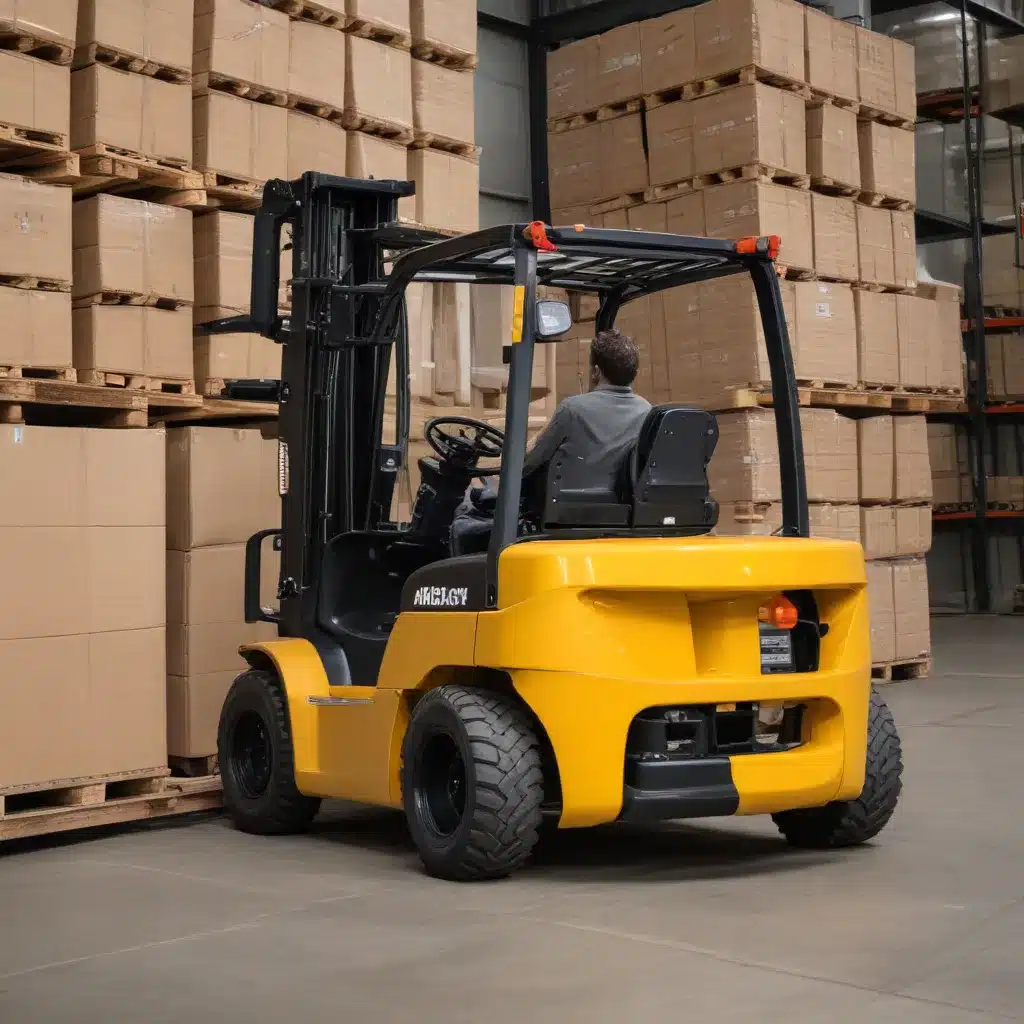
The Evolution of Forklift Attachments
Forklifts have long been the unsung heroes of warehouses, manufacturing facilities, and material handling operations. These robust machines have played a vital role in transporting and maneuvering heavy loads, enabling efficient logistics and streamlined workflows. Yet, the true power of forklifts lies in their ability to adapt and expand their capabilities through the use of specialized attachments.
The history of forklift attachments dates back to the early 20th century, when these material handling workhorses first emerged on the scene. As industries evolved and diversified, the need for particular tools to address unique challenges grew. This led to the development of a wide array of attachments, transforming forklifts into versatile machines that could adapt to varying demands.
In the early days, basic accessories like tine hooks and extension slippers started to emerge, catering to the specific needs of different industries. Over time, as technology and material handling requirements advanced, attachments became more sophisticated, offering greater precision and flexibility in managing materials.
Unlocking Forklift Versatility
Today, the range of forklift attachments available is truly impressive, each designed to tackle a specific challenge or enhance the machine’s capabilities. Let’s explore some of the most common and impactful attachments:
Spreader Beam
This attachment is a game-changer when it comes to handling lengthy and unwieldy items, such as steel beams or pipes. By evenly distributing the weight of the load, the spreader beam ensures stability during transport, making it an invaluable tool for construction and manufacturing environments.
Tine Hook
Designed for lifting loads with exposed hooks, like scaffolding, machinery parts, or rolls of cable, the tine hook provides a secure grip, allowing for precise maneuvering of these unique materials.
Extension Slippers
These extensions slide onto the forklift’s tines, offering better reach for longer loads. Whether you’re dealing with extra-long pallets or bulky construction materials, extension slippers enhance your forklift’s versatility, enabling you to handle a wider range of items.
Hooks
Ideal for loads with hanging points, like crates or boxes with handles, the hook attachment ensures that items stay in place during transport, preventing accidents and product damage.
Tow Jib
This attachment transforms your forklift into a versatile tow truck, making it indispensable for towing heavy materials or equipment with ease.
Prong Drum Positioner
If your operations involve handling drums of various sizes, the prong drum positioner attachment offers precise drum positioning, a crucial feature for ensuring stability and preventing accidents.
Clamps
Suitable for materials such as paper rolls, textile bales, or crates, clamps provide a secure grip, reducing the risk of load shift during transport.
Maximizing Load Capacity and Safety
As forklift attachments expand the machine’s functionality, it’s essential to understand their impact on load capacity. Each attachment alters the forklift’s weight-bearing capabilities, requiring operators to recalculate the revised load rating.
To ensure safe and efficient operations, it’s crucial to thoroughly understand the factors that influence load capacity:
-
Forklift’s Overall Capacity Rating: This depends on the forklift’s design and structural integrity, which must be taken into account when using attachments.
-
Load Position and Stability: Ensuring that the load is evenly distributed and securely positioned on the attachment is paramount for maintaining stability and preventing accidents.
-
Attachment Type: Different attachments have varying effects on the forklift’s stability and weight-bearing capacity, so it’s essential to understand their specific impact.
Neglecting these load capacity considerations can lead to accidents, equipment damage, and even injuries. That’s why safety should be the top priority when using forklift attachments.
Prioritizing Safety and Compliance
Forklift attachments, while incredibly valuable, must be used with caution. Safety considerations are paramount to prevent accidents and ensure the well-being of workers and the longevity of equipment.
Proper Training
Operators should receive comprehensive training in the safe use of forklift attachments. This ensures they understand how the attachments affect the forklift’s stability and load capacity, as well as proper handling techniques.
Regular Inspections
Periodic inspections of forklift attachments are crucial to identify wear and tear, loose components, or other potential issues. Maintenance and repairs should be performed promptly to guarantee safety and reliability.
Certification and Compliance
Forklift attachments should be certified and compliant with relevant safety standards in your location. Operating with non-certified or substandard attachments can be extremely hazardous and may violate local regulations.
Load Stability
Ensuring that loads are stable and correctly positioned on the attachments is crucial. Operators should follow best practices for load handling to prevent accidents and product damage.
By prioritizing safety through proper training, inspections, and the use of certified attachments, you can unlock the full potential of forklift attachments while maintaining a safe and efficient work environment.
The Future of Forklift Attachments
As industries continue to evolve and material handling needs become more complex, the role of forklift attachments will only grow in importance. Manufacturers are constantly pushing the boundaries of innovation, introducing new and improved attachments that enhance the versatility and capabilities of these indispensable machines.
From automated remote-controlled attachments to eco-friendly electric-powered models, the future of forklift attachments is bright. These advancements will not only improve efficiency and productivity but also prioritize worker safety and environmental sustainability.
As a seasoned industry expert, I’m excited to see how forklift attachments will continue to transform the landscape of material handling. By staying informed about the latest innovations and best practices, professionals can leverage these powerful tools to streamline operations, reduce costs, and drive their industries forward.
Remember, when it comes to forklift attachments, safety and compliance should always be the top priorities. By investing in the right attachments and ensuring proper training and maintenance, you can unlock the full potential of your forklift fleet and elevate your material handling processes to new heights of efficiency and versatility.
To learn more about the latest forklift attachments and industry trends, be sure to visit Forklift Reviews. Our team of experts is dedicated to providing the most comprehensive and up-to-date information to help you make informed decisions for your business.

